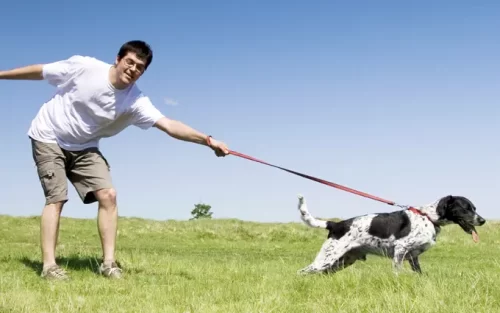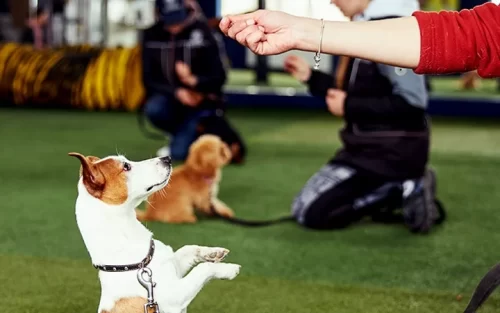Welcoming a new furry family member into your home is an exciting and fulfilling experience, but it can also be challenging. When introducing a new dog to your home, it is essential to take the proper steps to ensure a smooth and successful transition. A proper introduction can prevent anxiety, aggression, and territorial behavior, setting the foundation for a long and happy life together.
This comprehensive guide will provide you with all the information you need to introduce a new dog to your home successfully. Whether you are bringing a puppy or an adult dog into your household, our tips and tricks will help make the process as stress-free as possible.
We will cover everything from preparing your home for the new arrival to introducing your current pets to the latest member of the family. We’ll also discuss the best ways to bond with your new dog and establish routines that can help build trust and create a solid and lasting relationship.
It’s essential to remember that every dog is unique, and the introduction process may vary depending on age, breed, and temperament. However, our guide offers a comprehensive and adaptable approach that can help make the introduction process as smooth as possible for both you and your new furry friend.
We understand that introducing a new dog to your home can be a daunting experience, but with the proper preparation and mindset, it can be a rewarding and life-changing decision. Following our guide can help ensure a positive and successful transition for you and your new furry family member.
So, whether you’re a first-time dog owner or a seasoned pro, let’s dive into our comprehensive guide and learn how to introduce a new dog to your home.
Preparing for Your New Dog’s Arrival
Gather Supplies
Before your new dog arrives, make sure you have all the necessary supplies on hand. This includes a collar, leash, food, and water bowls, dog food, a comfortable bed, toys, grooming tools, and waste bags. Consider investing in a crate, baby gates, or a playpen to help train and manage your dog’s space.
Dog-Proof Your Home
Just like baby-proofing, dog-proofing your home is crucial to ensure your new pet’s safety. Remove potential hazards, such as toxic plants, small objects that could be swallowed, and electrical cords. Secure cabinets containing cleaning supplies or medications and install baby gates to block off restricted areas.
Designate a Safe Space
Create a designated area in your home where your new dog can feel safe and secure. This can be a separate room, a quiet corner, or a crate. Make the space comfortable with a bed, toys, and a water bowl.
The First Meeting
Neutral Territory
If possible, introduce your new dog to your family and existing pets on neutral territory, such as a nearby park or a friend’s yard. This can help reduce territorial behavior and make the first meeting less stressful.
Keep It Calm
During the initial meeting, keep your voice calm and soothing, and use positive reinforcement like treats and praise. Allow your new dog to explore and sniff their surroundings and gradually introduce them to each family member one at a time.
Supervise Interactions
If you have other pets, closely supervise their interactions with the new dog. Keep both dogs on a leash and allow them to sniff each other from a distance. Look for signs of stress or aggression, such as growling or raised hackles, and intervene if necessary.
Bringing Your New Dog Home
Establish a Routine
Once your new dog is home, establish a consistent feeding, walking, and playtime routine. Dogs thrive on routine, and it will help them adjust to their new environment more quickly.
Be Patient
Remember that your new dog may be anxious or confused during the first few days in their new home. Avoid overwhelming them with too many visitors, loud noises, or new experiences. Be patient and give them time to adjust.
Positive Reinforcement
Use positive reinforcement to encourage good behavior and help your dog feel secure. Praise and reward them for following commands, using the bathroom outside, or being calm around other pets.
Training and Socialization
Basic Commands
Begin teaching your new dog basic commands, such as “sit,” “stay,” and “come,” as soon as they are comfortable in their new environment. Consistent training will help build trust and strengthen the bond between you and your dog.
Socialization
Expose your new dog to a variety of people, animals, and environments to help them develop social skills and confidence. Start with controlled situations, like meeting a neighbor’s friendly dog, and gradually increase the difficulty level.
Professional Help
If your new dog struggles with behavior issues or has difficulty adjusting, consider seeking professional help from a certified dog trainer or behaviorist. They can provide personalized guidance and support to help your dog overcome any challenges.
Monitoring Your Dog’s Progress
Track Behavior Changes
Monitor your dog’s behavior and note any positive or negative changes. This will help you find areas where additional training or socialization may be needed.
Adjust Your Approach
If your dog struggles in certain areas, be prepared to adjust your approach. This may involve trying new training techniques, gradually introducing them to new experiences, or seeking professional guidance.
Celebrate Successes
Acknowledge and celebrate your dog’s successes, no matter how small. This will boost their confidence and strengthen the bond between you and your new pet.
Conclusion
Bringing a new dog into your home can be an exciting and rewarding experience for both you and your furry friend. However, it’s important to remember that introducing a new dog to your household can be a big adjustment for everyone involved. Following the tips and strategies outlined in this guide can help ensure a smooth and successful transition for your new dog and your family.
Start by preparing your home and family for the new arrival, including setting up a safe and comfortable space for your new dog and setting up rules and routines. When it’s time to introduce your new dog to your existing pets, take things slowly and carefully, using positive reinforcement and supervision to help them establish a good relationship.
With time, patience, and love, you can help your new dog feel welcome and secure in their new home. Remember that every dog is unique, and there may be some bumps in the road along the way. Be patient and persistent, and feel free to seek out professional help if you’re having trouble.
Following the steps outlined in this guide can help ensure a smooth and successful transition for your new dog and your family. Remember to be patient, persistent, and positive, and don’t hesitate to seek professional help. With time, love, and patience, you can build a happy and healthy relationship with your new furry friend.



